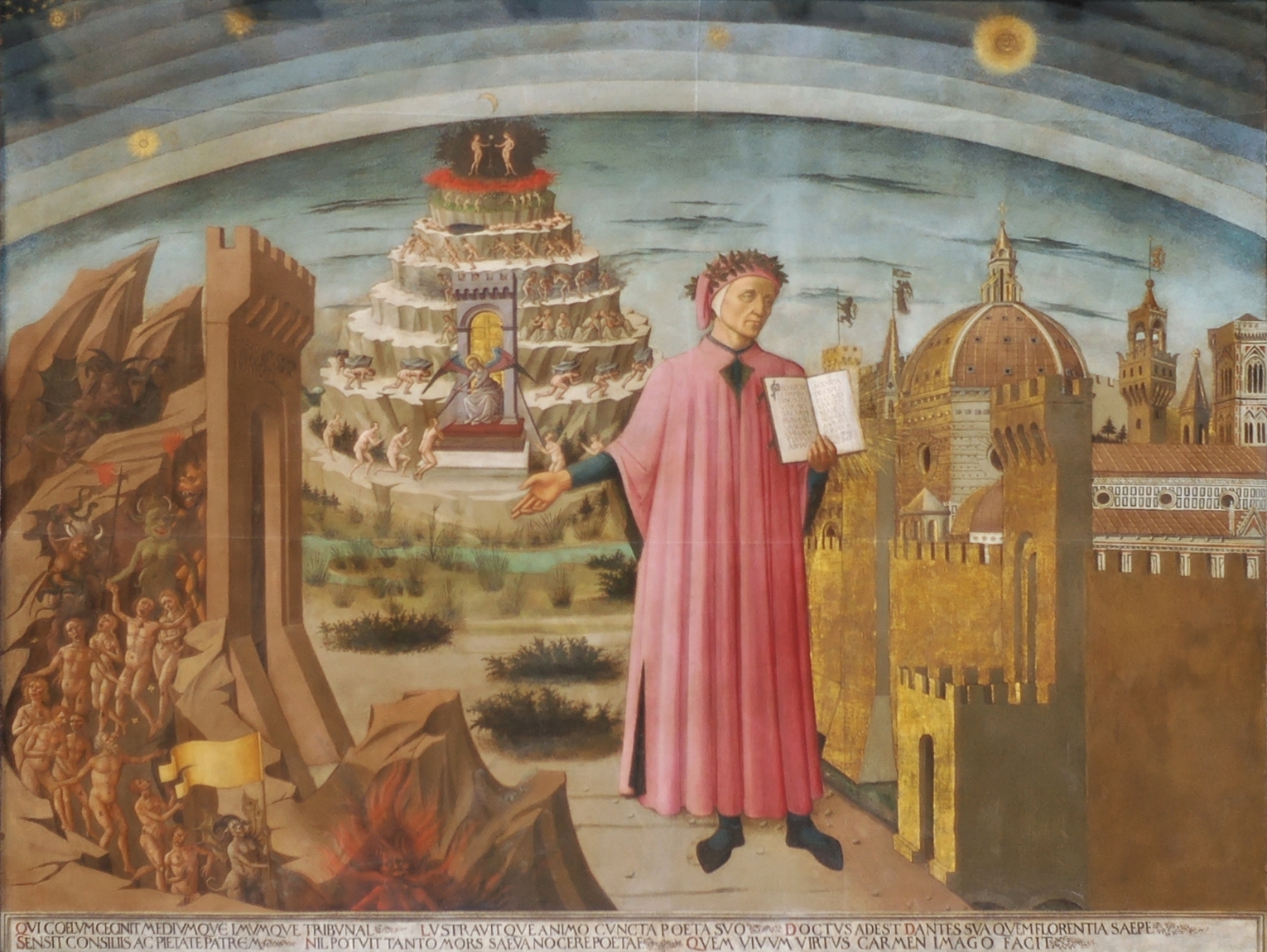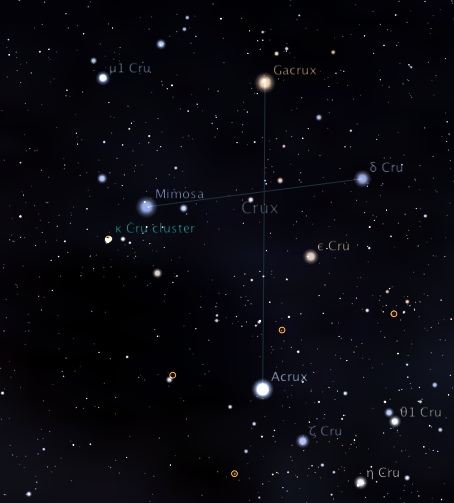Brown's present subject of Dante -- one of the giants of Western literature -- provides a superb background for a modern fictional adventure. But there are, in fact, real scientific mysteries about Dante -- which should well be explored. The geometry of Dante's universe, for example, as described in the Divine Comedy, has been studied by mathematicians, and some see in it an example of non-Euclidean geometry.
Dante and his world. A fresco by Domenico di Michelino, in the Duomo of Florence (Wikimedia Commons)
This picture shows some of the "curvature" of Dante's universe: the Earth, the stars, the planets, Hell -- the Inferno -- and Dante's beloved Florence in the background. If one follows Dante's description of the circles of hell, the mountain of Purgatory, Jerusalem, and the enigmatic Empyrean, it's possible to see here an unconventional kind of geometry (non-Euclidean), as described in the link above.
But the Dantesque mystery that I want to explore here is far deeper, and, to my knowledge, has not been studied much since the 19th century. It's a deep astronomical conundrum that has consumed me ever since I came upon it a few years ago.
Close to the beginning of the middle volume of the Divine Comedy, the Purgatorio, Dante writes (Canto I, 22-27; Allen Mandelbaum's translation, Bantam, 1984):
Then I turned to the right, setting my mind
upon the other pole, and saw four stars
not seen before except by the first people.
Heaven appeared to revel in their flames:
o northern hemisphere, because you were
denied that sight, you are a widower!
(I' mi volsi a man destra, e puosi mente
a l'altro polo, e vidi quattro stelle
non viste mai fuor ch'a la prima gente.
Goder pareva 'l ciel di lor fiammelle:
oh settentrional vedovo sito,
poi che privato se' di mirar quelle!)
What a mystery! Dante wrote this around AD 1300 (he was born in 1265, and the Inferno, begins with: "When I had journeyed half of our life's way," Nel mezzo del cammin di nosta vita, which scholars have take to mean he wrote it at about age 35). The verses above clearly describe the southern-hemisphere constellation Crux -- better known as the Southern Cross. But the stars of the southern hemisphere were only explored for the first time by northern-hemisphere navigators a century and a half after Dante's time!
The Southern Cross asterism, in the constellation Crux, photo: oneminuteastronomy.com
How could Dante, writing in the very early 1300s, know about a constellation first seen by the Venetian explorer Alvise Cadamosto, who noted it while sailing off the African coast in 1455, and more precisely described by later navigators: Amerigo Vespucci (who saw the constellation as an almond, Mandorla) in his voyages to South America in 1499 to 1502, and later by Ferdinand Magellan, who sailed from the Atlantic to the Pacific in 1519 to 1522? I've posed this question to some of the world's leading astronomers, but no one has an answer.
Friday, July 26, 2013
It's Not Just Dan Brown!
Subscribe to:
Post Comments (Atom)



No comments:
Post a Comment